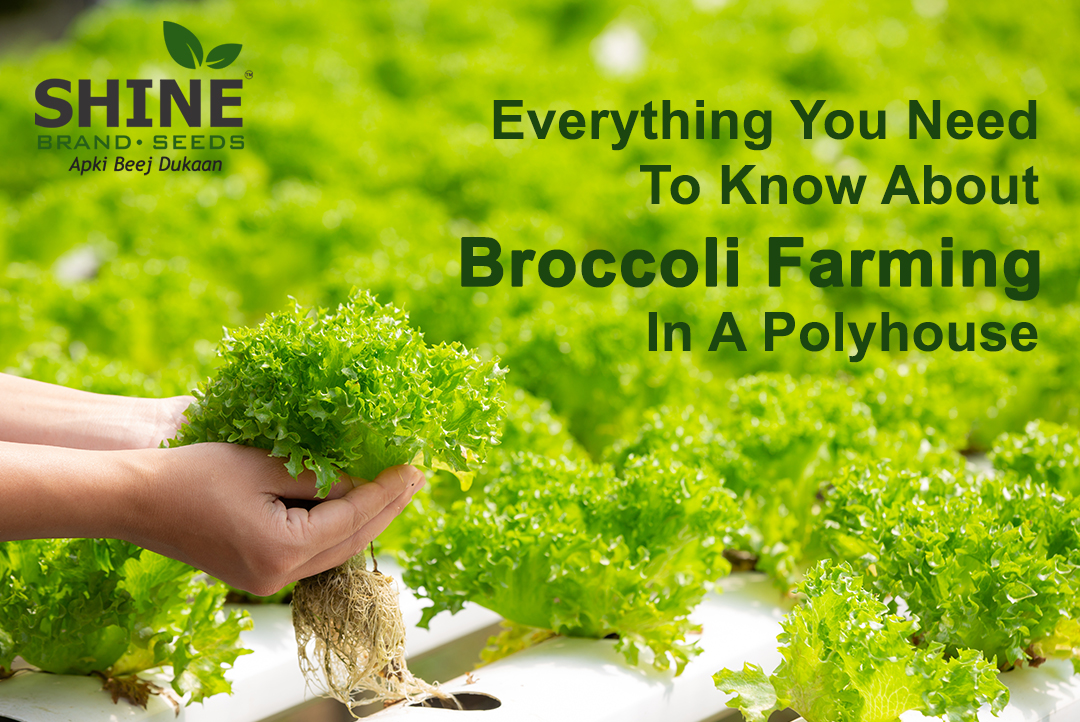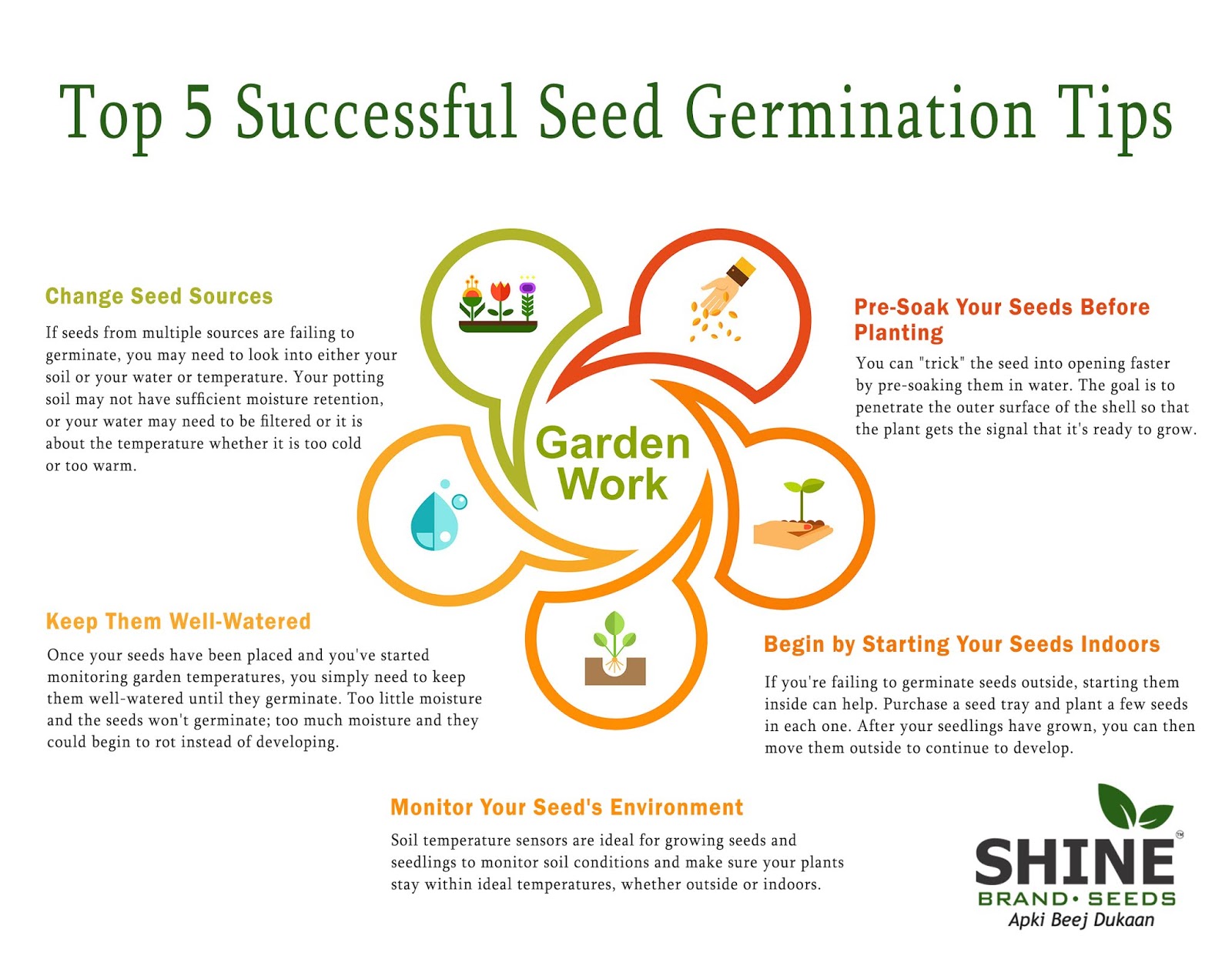Everything You Need To Know About Broccoli Farming In A Poly House
Broccoli
is a nutritious green plant in the cabbage family which treated as a vegetable
and it's large flowering head and stems used to eat. Broccoli farming in a poly
house is a great source of income. Broccoli has amongst the highest
concentration of magnesium, iron, and calcium in between all vegetables and it
also has very high amounts of vitamin A and vitamin C.
Let's
have a brief look at the given guide for broccoli farming in a poly house.
A Guide to
Broccoli Farming in Poly House
Broccoli
is fresh, crisp and tasty to eat and generally used this in a veg salad.
Broccoli plant has the same size as cauliflower. Currently, Broccoli has become
more popular in India, and the consumption of broccoli has increased in the
five-star hotels as well as at home for a veg salad.
Varieties
of Broccoli Plants
There are various varieties of
broccoli plants used for farming in poly house in India:
●
Royle Green
Broccoli
●
Evergreen
Broccoli
●
Danube
Broccoli
●
Yugren
Broccoli
●
Salinas
Pilgrim Broccoli
●
Green
Mountain Broccoli
●
Premium Crop
Broccoli
●
Premium Pusa
Broccoli
Basic
Requirements for Broccoli Farming
Broccoli
is a high-value
vegetable crop for off-season and main season production under poly
house farming. A partially ventilated low-cost poly house with both polythene
and agro shed net can be suitable for farmers.
Poly
house farming is a process of cultivation under complete controlled
environmental circumstances like temperature, humidity, and fertilizers, etc
with the automated system.
Poly
house farming should be designed in such a way that smart farmers can produce
high-value crops out of season when prices of farm produce are at their
highest. This is the way you can get higher incomes and a higher return on the
high initial investment. Since you can control light, ambient temperature,
humidity, and water for irrigation, you can generate all the crops that fetch a
high price in local and regional markets. In poly houses, you can generate
pesticide-free produce or even organic produce that fetch a higher price due to
their high nutritional value, better taste, and freshness.
Soil
Requirement
Broccoli
vegetables can be grown in a wide variety of soils type. To obtain a better
yield from broccoli crop sandy and silt loam soils are most preferred. The soil
pH level (a measurement of the acidity and alkalinity) should be between 5.5–
7.0.
For
broccoli farming, the ideal temperature required 25°C to 26°C during the day
and 16° C to 17°C in the night. To get through the year production Broccoli
farming done in the poly house.
Before
planting broccoli land is plowed 3 to 4 times then add compost or well rotten
FYM (farmyard manure) and mix thoroughly at the time of land preparation.
Preparation
of Broccoli Seedlings
Generally,
many farmers make broccoli plant seedlings on their field
because most of the nurseries don’t create broccoli seedlings due to less
demand for broccoli seedlings.
So
that the best option is to buy some broccoli seeds and produce your broccoli
seedlings at home.
There are 2 methods for preparing
broccoli plant seedlings:
1.
Soilless Media: with the use of coco peat in the plastic
nursery tray
2.
Soil Media: raised soil bed
Seed
Spacing
Spacing
and seed rate varies accordingly to the selected cultivar, soil quality, and
fertility, planting method, etc. However, quality seeds are good enough for
planting.
However,
after spending and transplanting seedlings, thinning must be at about 3 cm
apart after 2 to 3 days of germination.
Spacing
for single row planting must be 40 cm to 45 cm apart, whereas, for double row
planting, the spacing should be 60 cm to 65 cm. The grown seedlings should be
watered sufficiently for several hours before planting on the field to avoid
the wilting during transplanting. Light irrigation should be done, just after
transplanting the seedlings.
Planting
and Fertilization
Because
broccoli is a cool-season crop, it generally is planted in the spring. You
should begin planting when soil temperatures reach at least 50°F and the
possibility of hard frosts (28°F or lower) has passed in the area. Broccoli
heads should be closed and tight (no yellow petals showing) to be considered
good quality.
Generally,
Broccoli is transplanted in the spring, it can be sown directly from seed in
late summer or early fall when soil temperatures are in the high 60s and
ambient air temperatures are in the 80s.
Under
these conditions, seeds commonly emerge in less than 7 days. Adequate soil
moisture is necessary for optimum broccoli seed germination. Depending on the
climate, transplanting begins in late March to mid- April month. Successive
plantings can happen every 2 weeks through August.
Depending
on the planter type used (random or precision), you must sow 0.5-1.5 pounds of
broccoli seed per acre, with seeds placed 12-18 inches apart in 36-inch rows.
When
transplanting, you must have a minimum of 11,000 plants per acre. Spacing
decisions depend on the row spacing of equipment, your ability to irrigate, the
planting date, and your specific market requirements (small or large heads).
Fertilizer
rates must be based on annual soil test results. The agriculture industry
relies heavily on the use of NPK fertilizer for healthy plant growth. Liming
can also be necessary to maintain soil pH in the 5.5-7.0 range for optimal
growth.
The
soil is a resource that wants to be managed and monitored carefully. Based on
soil analysis results fertilization can then be developed. This program is
specifically for the kind of soil that was sampled and subsequently analyzed.
This exercise must be done every season or every time a new crop is planted on
the land.
In
addition to having soil samples tested, the water quality must be analyzed
because water quality can have a direct effect on the growth of the plant.
Irrigation
Requirement for Broccoli Farming
In
poly house, Broccoli requires adequate soil moisture to maximize yield and
quality, especially during flower head formation.
Overwatering
can cause loose heads or hollow stems to increase and can promote root
diseases. Broccoli is generally irrigated with furrows and overhead sprinklers.
The amount and frequency of sprinkler irrigation or furrow irrigation depend on
soil type, weather conditions, crop production area, and maturity.
The
combination of soil moisture monitoring and weather-based irrigation scheduling
can be used to find out the water needs of Broccoli.
Weed
Management
After
a month of transplanting remove weed, this weed fights for food sunlight and
air with the major crop so maintain the crop weed-free.
Pest
Management
Insect
pests can be the main problem in broccoli production, especially in summer
plantings for fall harvest. Damage to transplants and older plants can effect
from cutworms, imported cabbageworm, cabbage looper, diamondback moth larvae,
and cross-striped cabbageworm.
Bacillus
thuringiensis (or Bt) is a microbial insecticide that can be used efficiently
against most types of broccoli pests and is a primary component of organic
production.
Broccoli
Harvesting
In
the poly house, broccoli grown from seed will come to harvest in 100 to 150
days. Grown from transplants broccoli will come to harvest in 55 – 80 days. Cut
buds when they are still green and tight with a knife and cut the central head
with 5 to 6 inches of stem. Leave the base of the broccoli plant and some outer
leaves to encourage new heads on secondary shoots. Heads that have begun to
open showing yellow flowers are past the eating stage.
As
shown in this guide now you have all the required information for broccoli
farming in a poly house. If you require more information about the process,
tips and seeds please visit Shine Brand Seeds or write us at shinebrandseeds@gmail.com
or call us at 8770896002.




Comments
Post a Comment